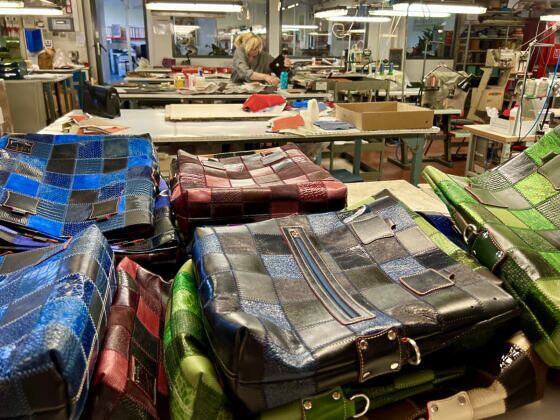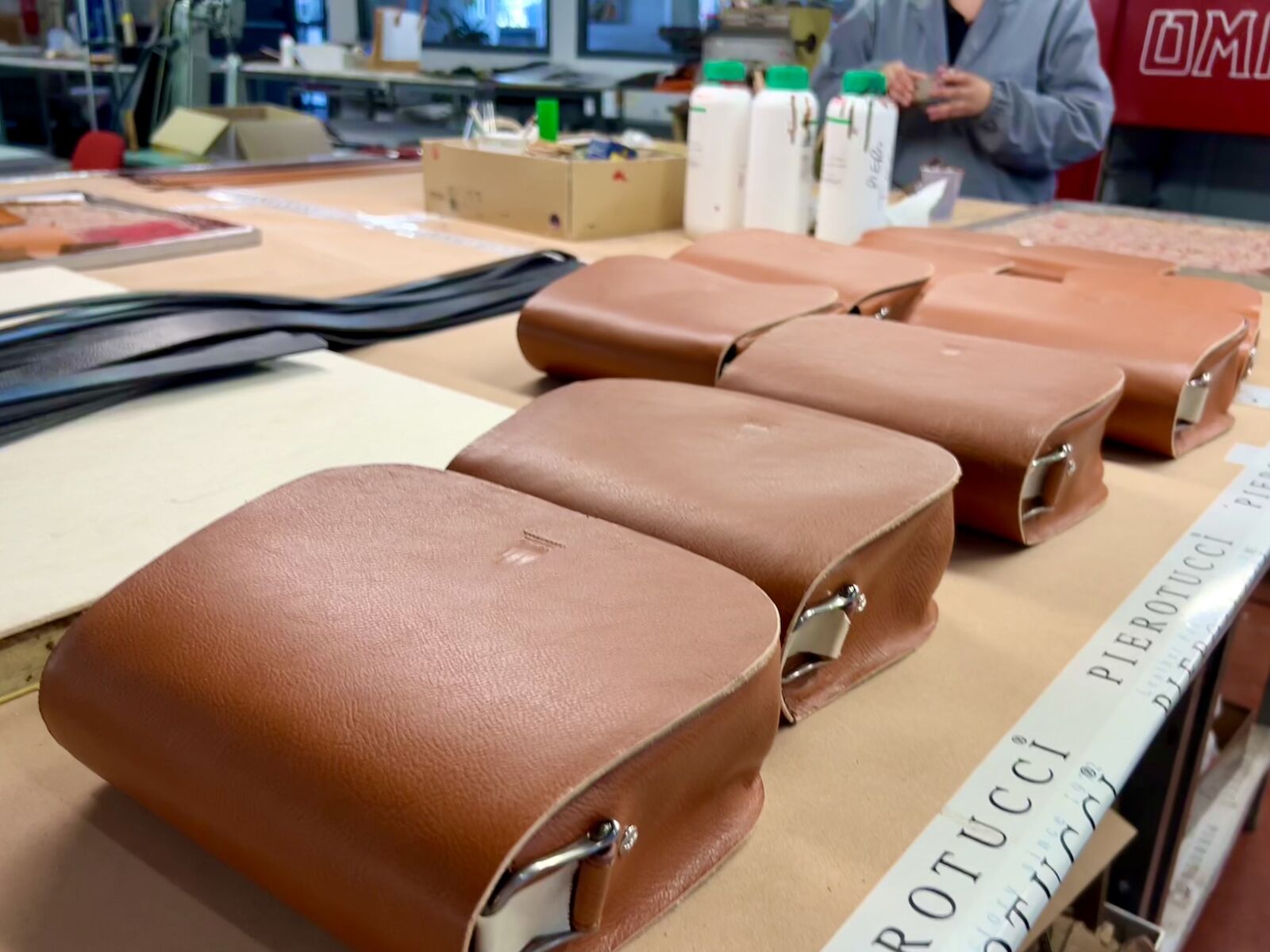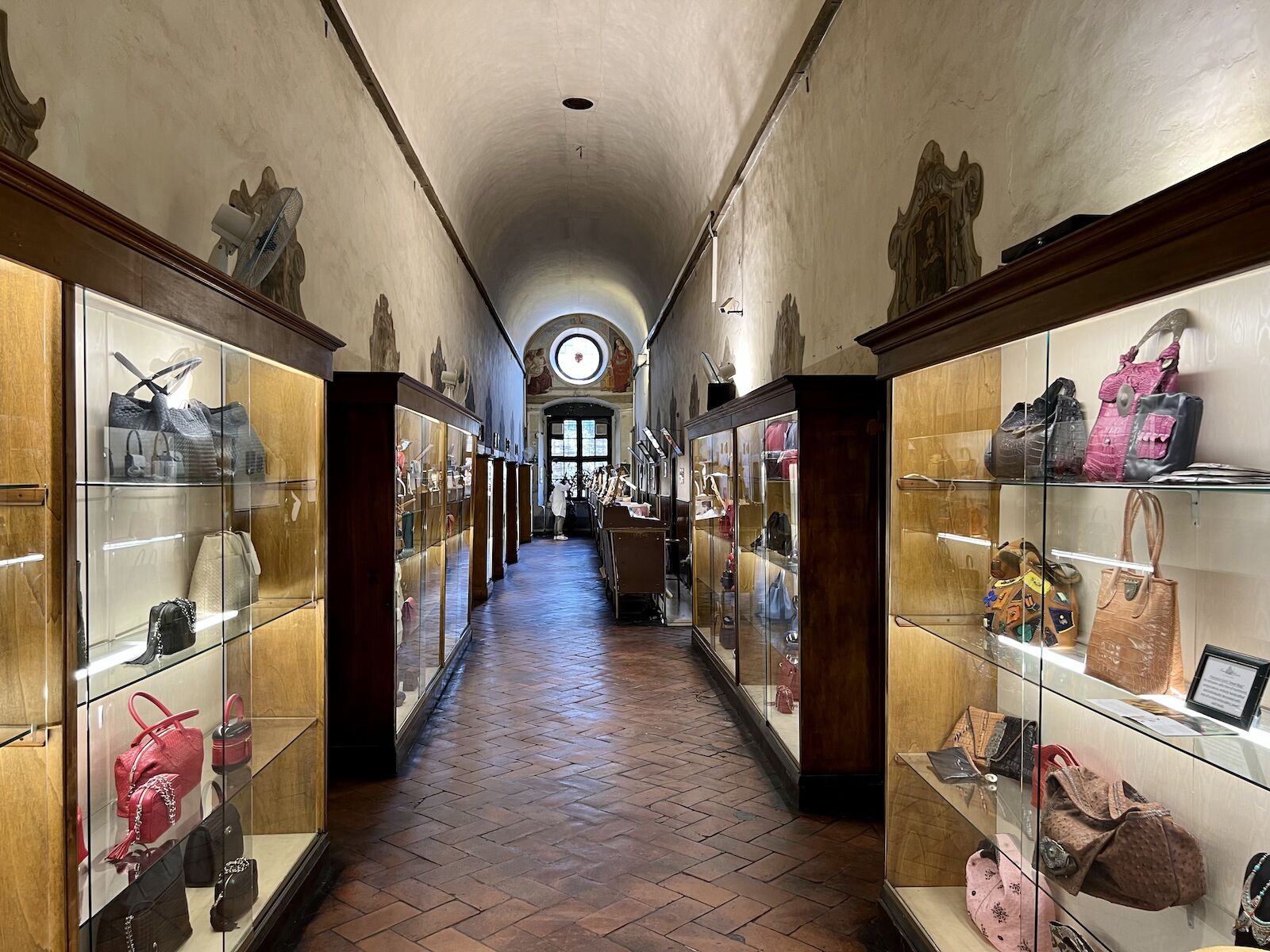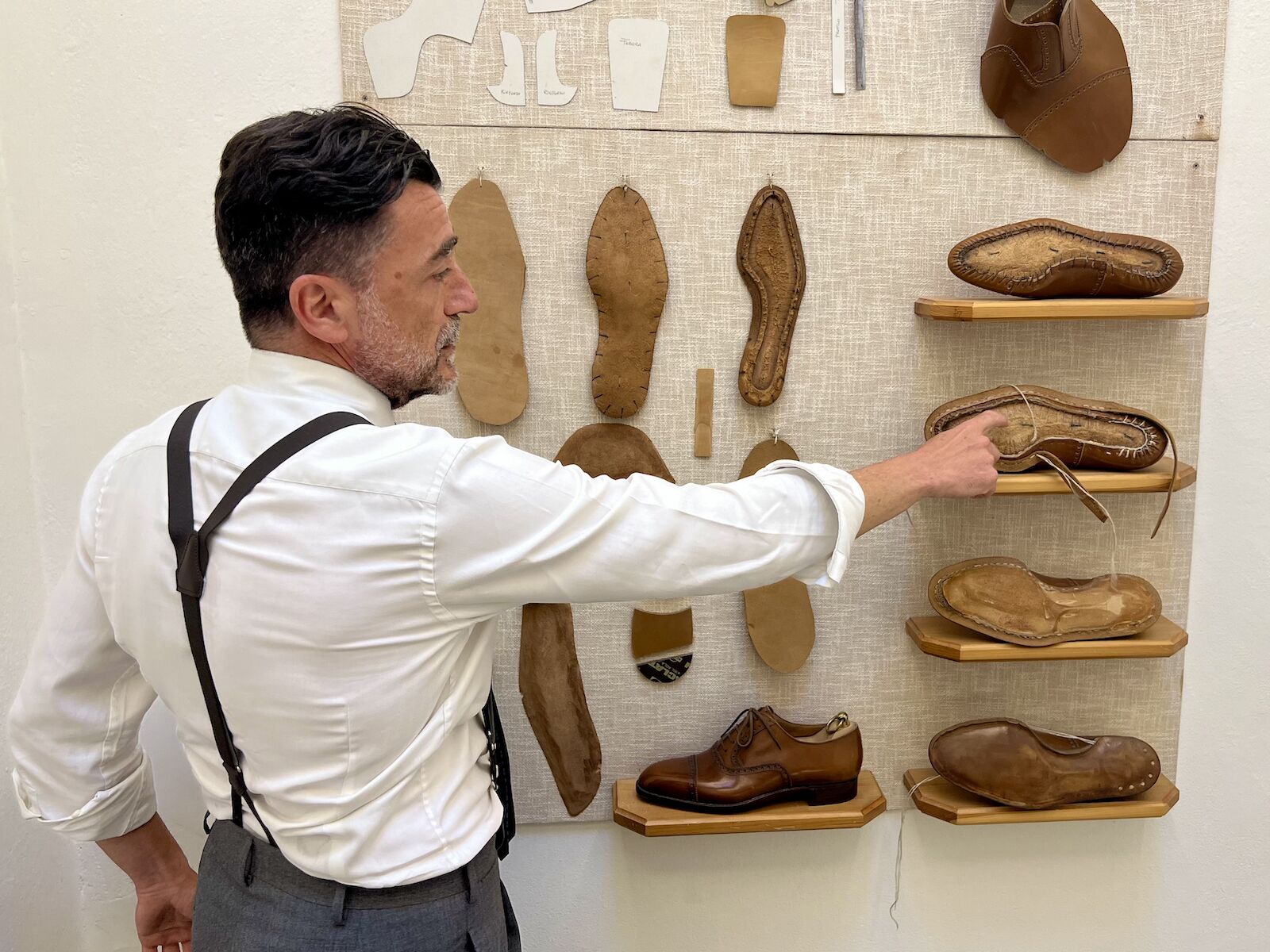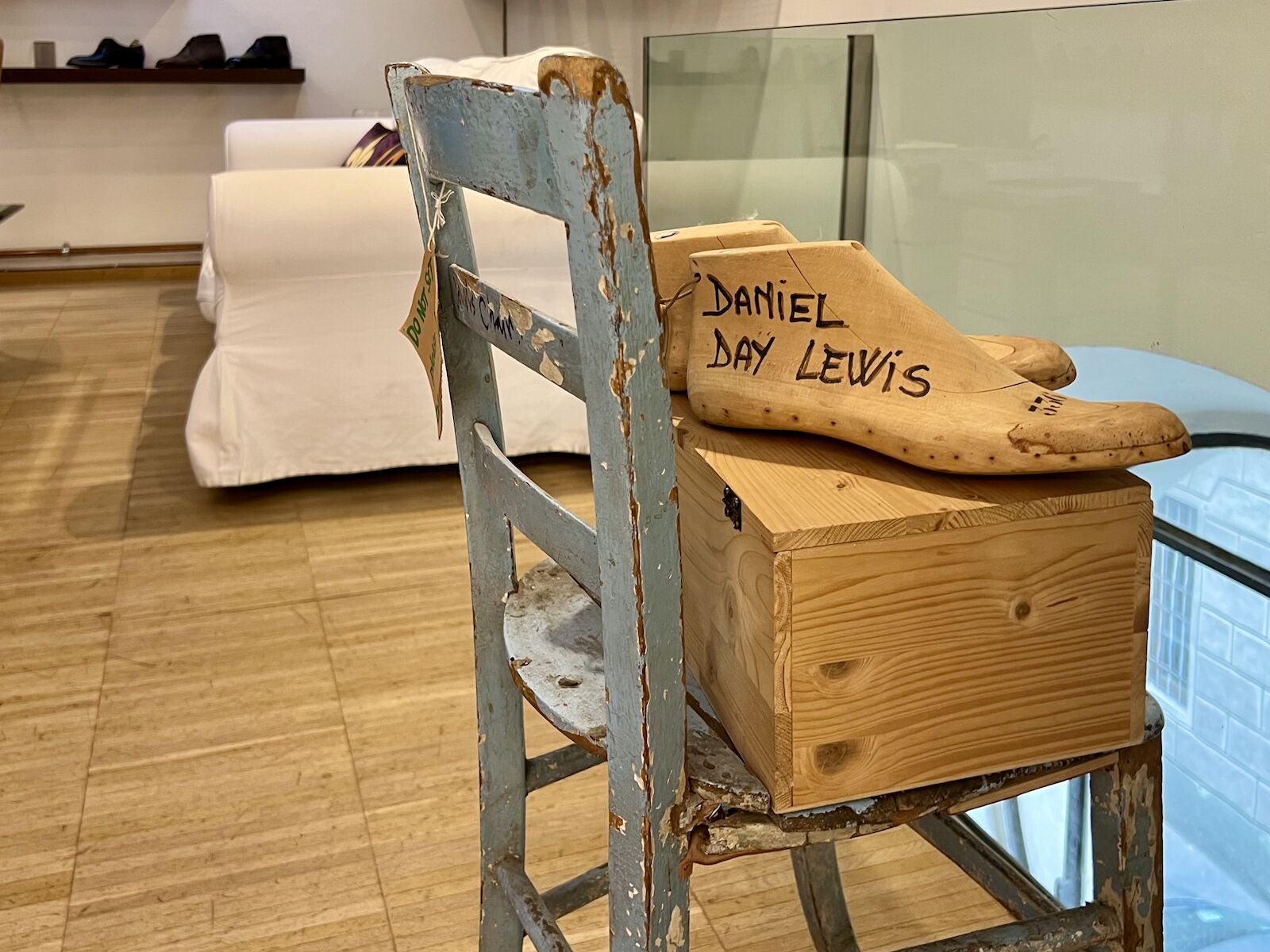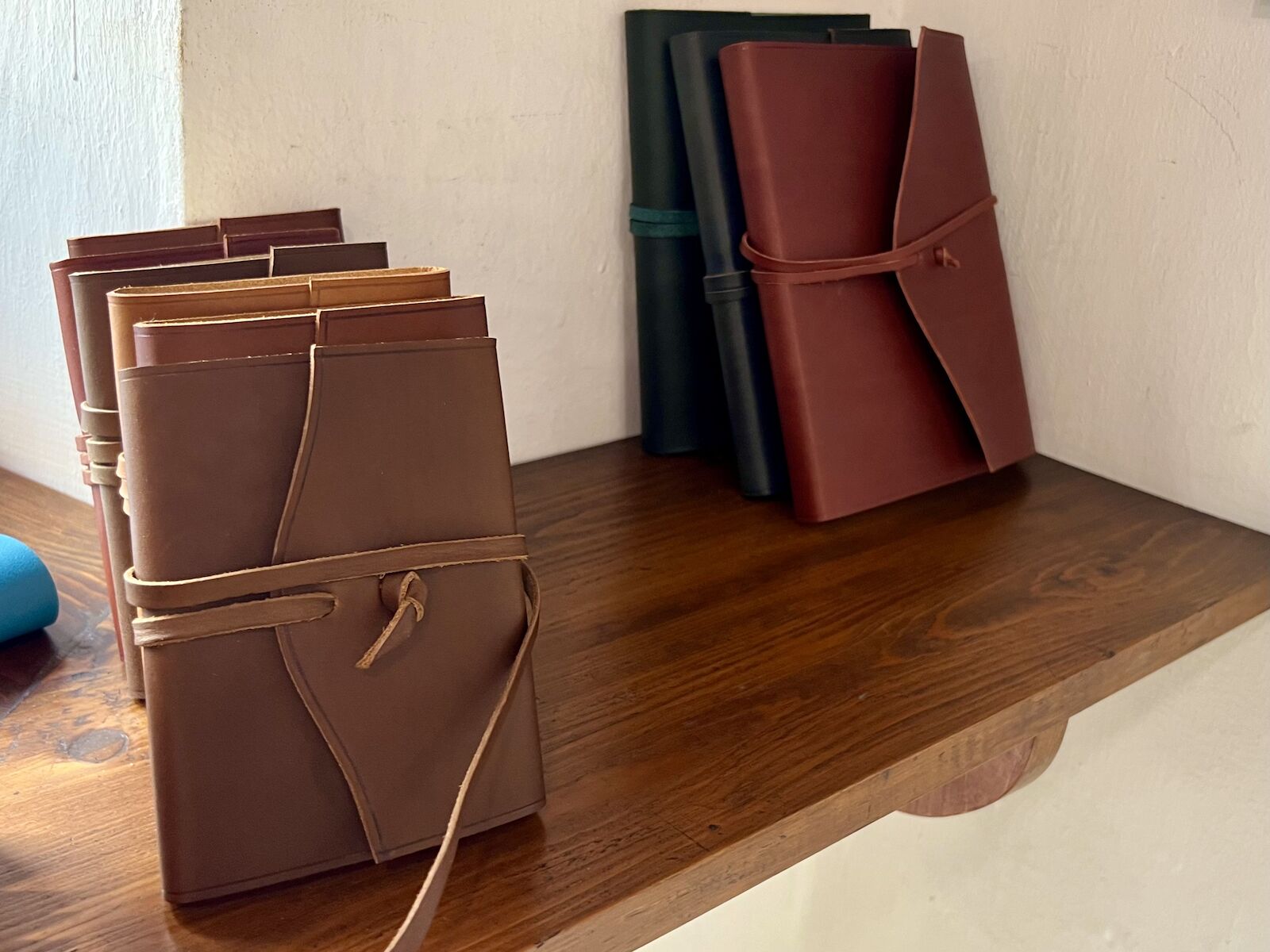Walk through the streets of Florence, Italy, and you’ll be greeted not just by stunning Renaissance art, Baroque architecture, and the lyrical sound of the Italian language. You’ll also see leather everywhere: clothing stores carrying leather jackets, stationary shops vending leather-bound journals, and kiosks festooned with leather bags, wallets, and belts in every hue of the rainbow.
Leather-making in Florence dates back hundreds of years to the first leather guild established in the 13th century. Today, visitors may be aware that luxury local brands like Gucci and Salvatore Ferragamo first began by selling top-quality leather footwear and bags. But until you stroll through this refined city, you may not realize how pervasive leather is, and what the seal “Made in Italy” really means. A look at leather artisans in Florence – and discovering how you could become one yourself – will help you grasp the aura of Italian leather.
